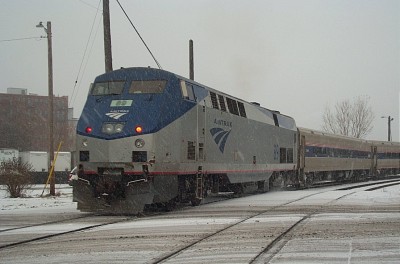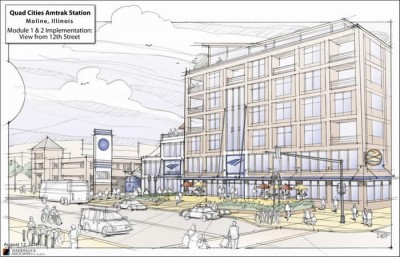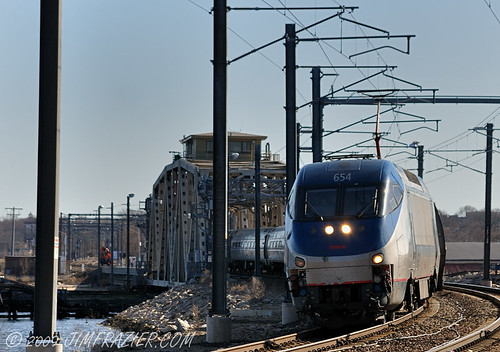 |
| An Amtrak passenger train heads back to Chicago with a heavy load of passengers. Photo by David Johnson/NARP |
UPDATE (1/21/11): The Iowa House approved a measure to cut the funding. It will likely move to the Senate. If you live in Iowa, use this link to contact your Rep and Senator today to tell them you support this important line.
Potentially following in the footsteps of Wisconsin and Ohio, the Republicans in the state legislature are considering the possibility of killing Iowa’s portion of a planned higher speed passenger rail line from Chicago to Iowa City that would pass through the Quad Cities and the new Moline (Ill.) multimodal transportation hub funded by a TIGER grant.
Just after the last round of TIGER grants were announced, Iowa and Illinois received a joint $230 million grant from the Federal Railroad Administration — separately from the DOT’s high-speed rail program — to start new 110 mph service from Chicago to Iowa City; service that could eventually connect to Des Moines and Omaha and lay the groundwork for a true 220 mph high-speed system connecting Iowa to the hub (Chicago) of the midwest’s high speed network.
The feds have committed $230 million of the $310 million that the two states were asking for on this project, leaving the states to come up with the rest. Iowa had committed around $10 million toward the gap, but state Republicans are currently working on a budget that would cancel that funding and result in all sorts of dilemmas for the project. From the Des Moines Register:
The Republican-sponsored budget package would not provide any state money needed to establish and subsidize operations for the route, almost certainly forcing the Iowa Department of Transportation to return a federal grant of $81.4 million already awarded for the passenger train project.
Where the story on this project differs from similar recent stories in Wisconsin and Ohio of grants going back to Washington is that this project spans two states for an interstate rail line. Illinois will be able to keep their share of the grant, which is larger since the bulk of the route spans their state, but what will happen to the route? Will it simply stop at the border at the new Moline multimodal hub? What about the future of a Omaha/Des Moines/Iowa City connection to Chicago? Will it bypass important Iowa cities?
It’s imperative that the Iowa legislature and Governor Branstad follow through on their state’s commitment to build this valuable new service. Following the path of I-80 and I-88, it would hit all the major population centers of Iowa on it’s way to and from Chicago.
 |
| Could this be the new terminal of the line intended to travel into Iowa? Photo of the planned Moline (Illinois) multimodal center. |
The silliest comment of the day comes from Senate Minority Leader Paul McKinley, who somehow manages to compare the benefits of a ditch being dug and filled in to an invaluable direct transportation connection to the economic engine of the Midwest.
“I can hire someone to dig a ditch, hire somebody to fill it in, and somebody would claim it creates a job, but does it really accomplish anything?” McKinley said. “I think that’s the question we have to ask ourselves about passenger rail to Chicago.”
The legislative session hasn’t started yet, so it may be premature to jump to any conclusions yet as the Iowa Chamber said, but as the recent cuts in Wisconsin and Ohio showed us, it’s important that these leaders hear from supporters early and often — long before a decision is made. And incoming Governor Terry Branstad has thus far pledged to keep the issue nonpartisan and examine the project fairly and honestly. He needs to be held to that promise.
Iowa residents: Call and write your state legislators and Governor Branstad and tell them that this project is crucially important to Iowa’s future. You can use this page to look up their phone numbers and emails.




